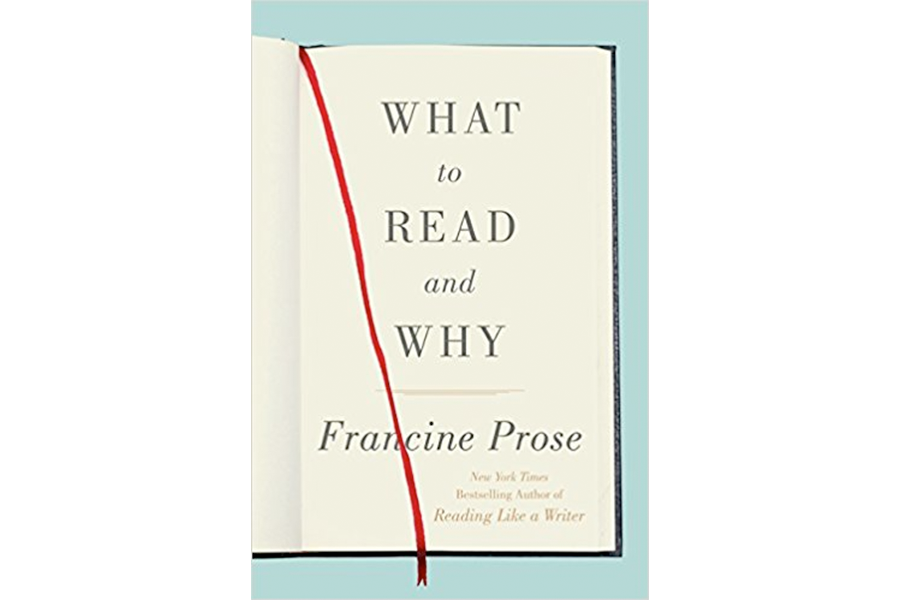'What to Read and Why' shares a personal love of authors and titles
Loading...
“ 'You’ve got to read this' ” should be the first line of every positive book review.”
So writes Francine Prose in What to Read and Why, an homage to her favorite authors and books. “I’ve always been delighted when an editor asked me to write an introduction to a classic that is being reissued in a spiffy new edition,” she writes in the opening pages of this essay collection, “because what I am doing, basically, is saying: You’ve got to read this—and here’s why.”
Forgive my plagiarism, but: You’ve got to read this new book by Francine Prose – and here’s why. The woman knows whereof she speaks. Author of six nonfiction books, scores of essays and reviews, and 21 (not a typo) novels, the aptly surnamed Prose has amassed an assemblage of literary trophies including a Guggenheim, a Fulbright, and the presidency of PEN America. All for good reason. Prose’s brain is no ordinary brain; her passion for the arts primarily but not exclusively literature – is no ordinary passion. Hence Prose’s wide-ranging oeuvre, encompassing everything from biographies of Anne Frank and the painter Caravaggio to young adult novels about bullying and sex.
In her 2006 bestseller, "Reading Like a Writer," Prose opines that the best way to learn writing is to read the best writers, and the best way to read the best writers is to understand the rules of the writing game. To that end, in that book she devoted each chapter to an element of style: Words, Sentences, Paragraphs, Narration, Character, etc.
"What to Read and Why" comes at the art of reading from a different, more specific perspective. The book opens with a concise yet lyrical chapter called “Ten Things That Art Can Do” (“Art can be beautiful; Art can shock us; Art is a time travel machine; Art can protect us”). Context established, Prose directs our attention to 32 of her most beloved authors, and their most beloved books, beginning with Mary Shelley’s "Frankenstein" and the book’s backstory. Prose brings us Shelley, awakening from a nightmare in which she watched “a hideous phantasm of a man stretched out, and then ... show signs of life, and stir with an uneasy, half-vital motion... [Shelley] “lay awake, trying to imagine a story that would frighten the reader as much as she had been frightened.” “How brilliant of Mary Shelley,” Prose writes, “to have put these thoughts and these speculations into the brain and the mouth of a monster.”
The authors and works profiled in this collection include some widely known classics and classicists – "Great Expectations," "Middlemarch," "Little Women," Jane Austen – and also some more personal, contemporary picks – Alice Munro, Mohsin Hamid, Stanley Elkin. In each chapter, Prose curates her curation, telling us not only which books and authors to look at, but where in each of them to look for the choicest, most telling views.
In her chapter on Jennifer Egan and her latest novel, "Manhattan Beach," Prose praises Egan for “conveying elusive sensations in an unforgettable way,” and having “a gift for metaphor [that is] evident throughout, as in this lyrical snapshot of the nefarious Mr. Q.: “He was hulking and cavernous at once, browned to mahogany. Time had enlarged him in an organic, mineral way, like a tree trunk, or salts accreting in a cave.” “Finishing 'Manhattan Beach,' ” Prose writes, “is like being expelled from a world that – despite the horrors of the war being fought in the novel’s background, despite the occasional gangster drugged and dumped into the sea – seems more charitable, more reasonable, and less chaotic than the one in which we now live.”
Like the works it profiles, "What to Read and Why" has its flaws. Although most of her commentary is stunningly original, Prose sometimes tells us things we already know: “A book is a kind of refuge,” she writes, as others have written, “to which we can go for the assurance that, as long as we are reading, we can leave the worries and cares of our everyday lives behind us and enter, however briefly, another reality.”
And like the works it profiles, "What to Read and Why" is a multi-faceted gem, appreciable on many levels: a thing of beauty in itself and a container that contains beauty in all its literary multitudes.
Meredith Maran is the author, most recently, of "The New Old Me" and "Why We Write." She’s on Twitter @meredithmaran








